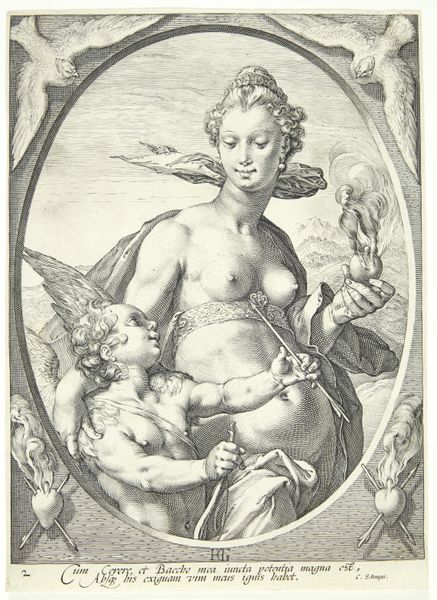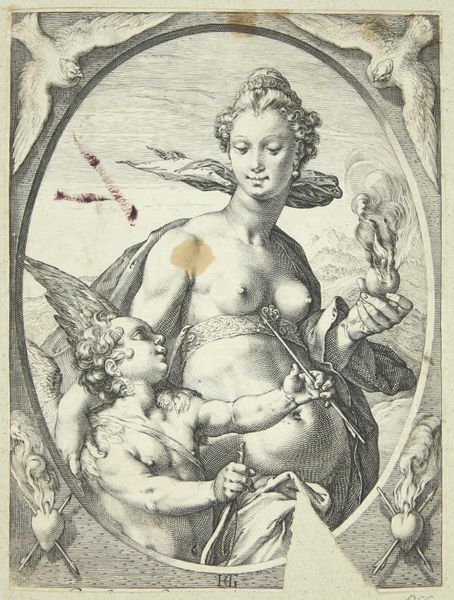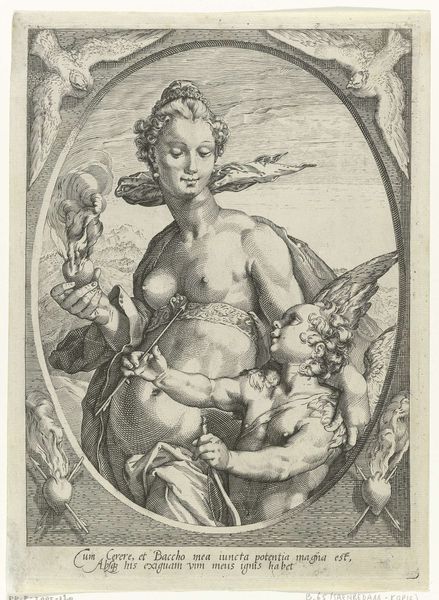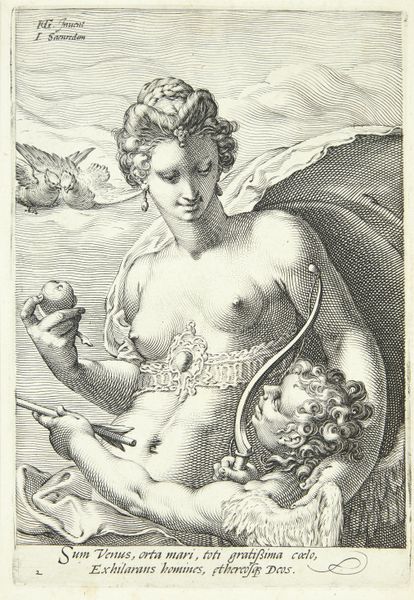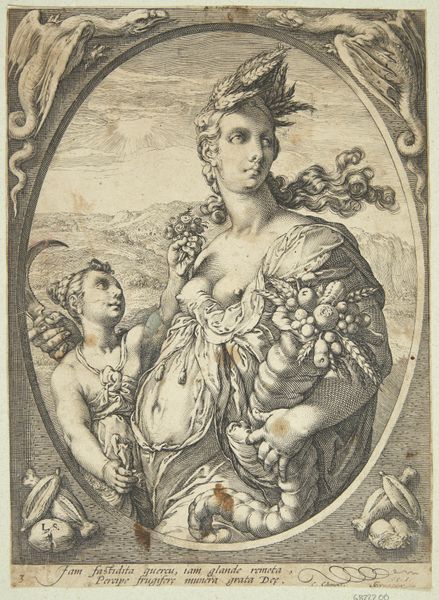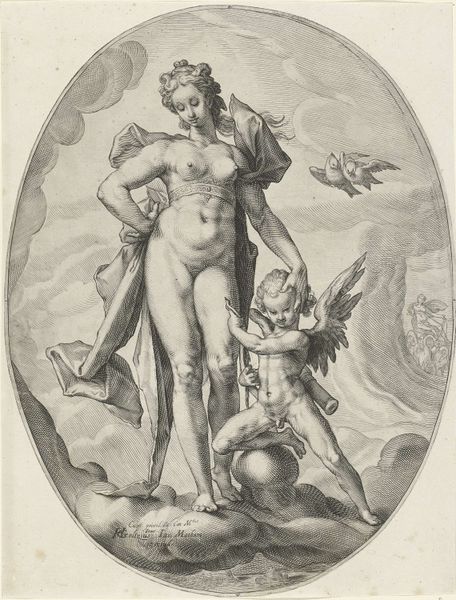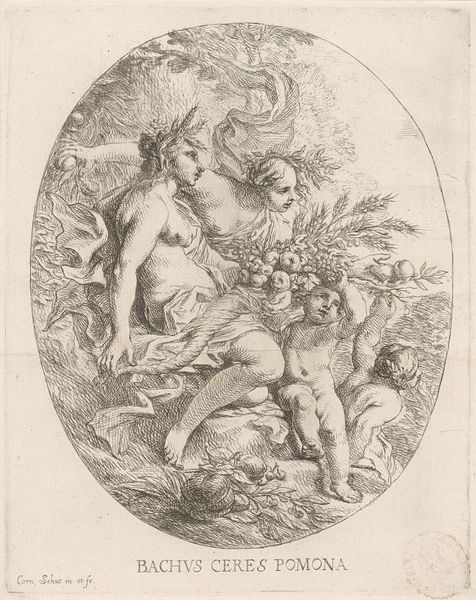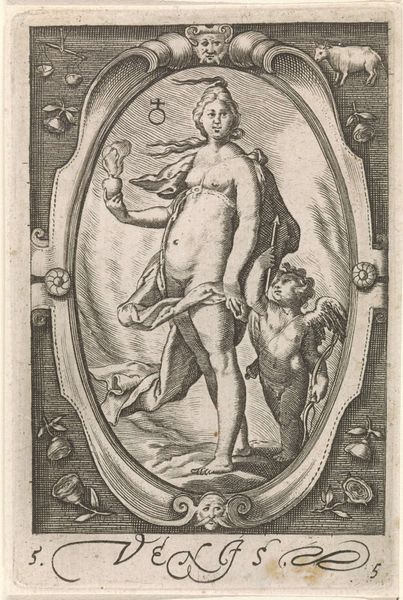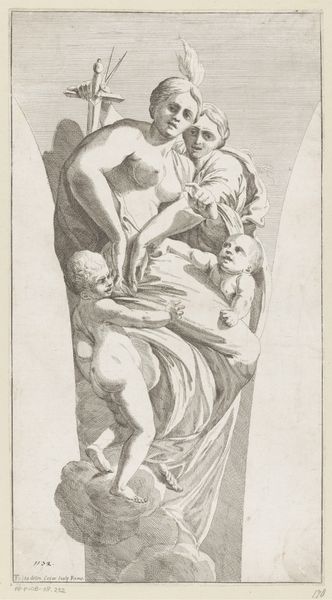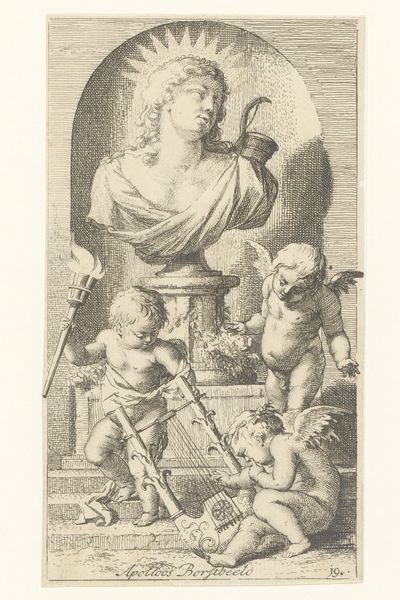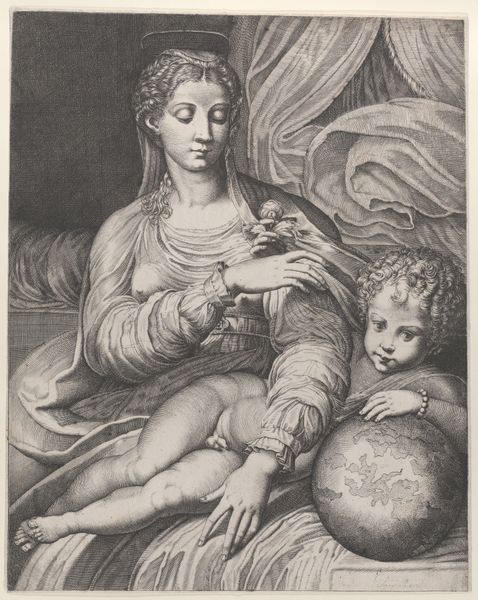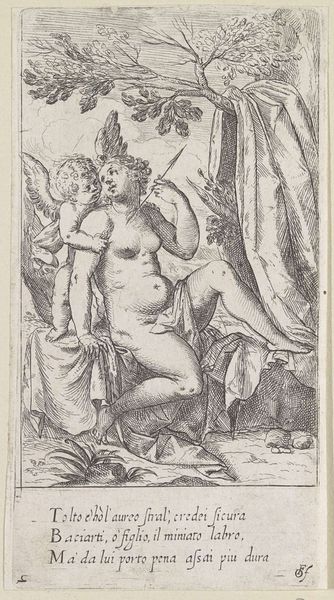
print, engraving
#
allegory
#
baroque
# print
#
old engraving style
#
figuration
#
history-painting
#
nude
#
engraving
Dimensions: 263 mm (height) x 200 mm (width) (bladmaal), 247 mm (height) x 184 mm (width) (plademaal)
H.L. Schärer created this print, Venus and Amor, using a technique called engraving, in the early 17th century. The process begins by incising lines into a metal plate, typically copper. These lines hold ink, which is then transferred to paper under high pressure. Look closely, and you can see how the density and direction of the lines create the illusion of shading and volume. Schärer was a master of this, using the technique to render the smooth skin and soft drapery of Venus. This was a highly skilled practice, demanding precision and control. Yet, prints like these were also fundamentally reproductive. They democratized images, making them accessible to a wider audience than paintings alone could reach. In a sense, prints like Venus and Amor existed at the intersection of craft and industry, artistry, and commerce. The challenge lies in appreciating the intricate labor involved, without losing sight of the print's circulation in a burgeoning marketplace of images.
Comments
No comments
Be the first to comment and join the conversation on the ultimate creative platform.
